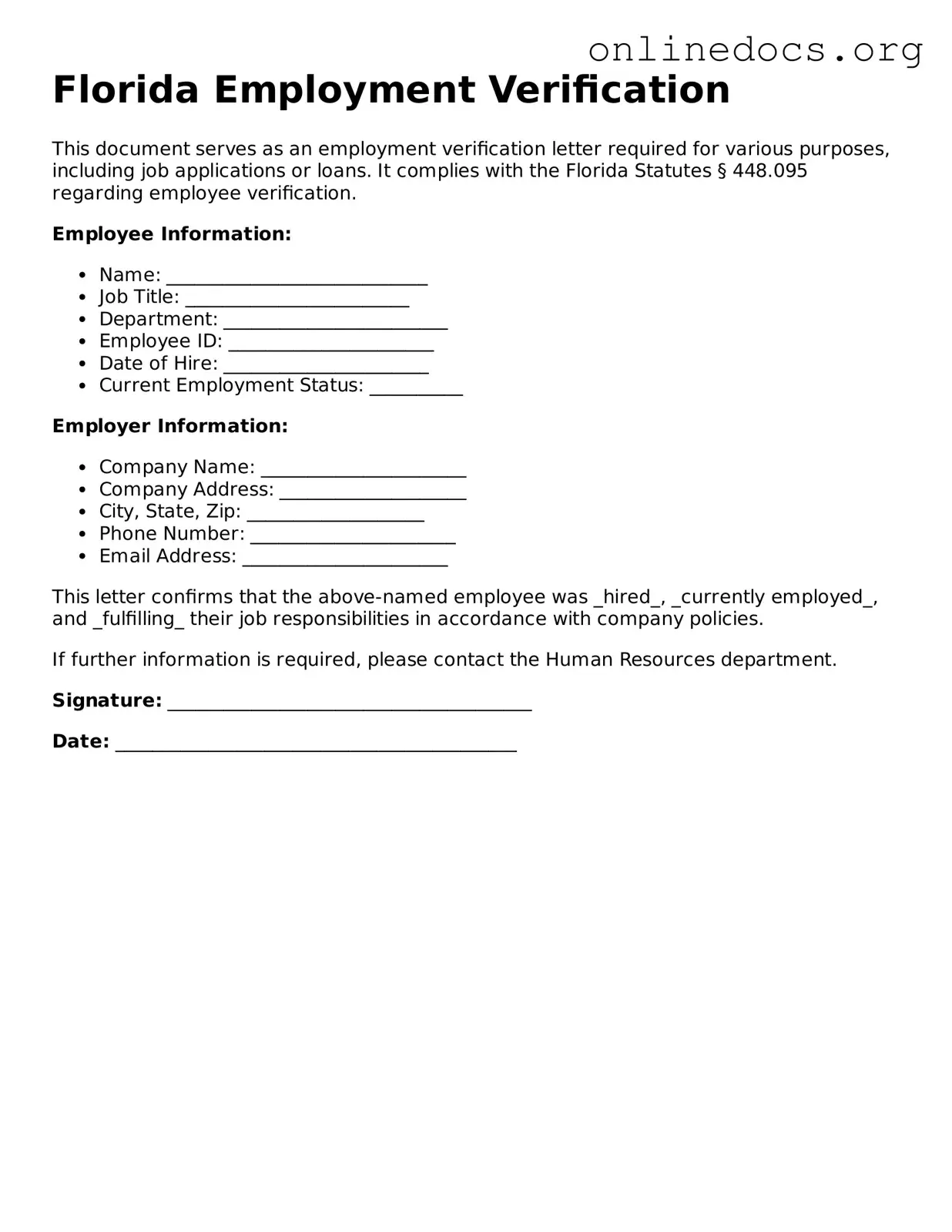The I-9 form, officially known as the Employment Eligibility Verification form, is a critical document for employers in the United States. Like the Florida Employment Verification form, it is used to confirm an employee's identity and legal authorization to work in the country. Employers must complete the I-9 form for each new hire, ensuring that they have the necessary documentation, such as a passport or driver's license, to validate their eligibility. This process not only protects the employer from potential legal issues but also safeguards the rights of employees by confirming their lawful status in the workforce.
In Tennessee, utilizing an Indemnification and Hold Harmless Agreement can be crucial for safeguarding oneself against potential liabilities. By clearly defining the roles and responsibilities of each party involved, this legal document helps ensure that the risks associated with specific activities are appropriately managed and that one party is protected from claims made by the other. Understanding this agreement is vital for anyone looking to navigate the complexities of legal risk in various engagements.
The W-2 form, or Wage and Tax Statement, serves a different purpose but is similarly essential for employment verification. Employers use the W-2 to report an employee's annual wages and the taxes withheld from their paychecks. While the Florida Employment Verification form focuses on verifying employment status, the W-2 provides a comprehensive view of an employee’s earnings and tax contributions. Both documents are vital for tax purposes and help ensure that employees have the necessary documentation to file their taxes accurately.
The 1099 form, specifically the 1099-MISC or 1099-NEC, is used for reporting income earned by independent contractors and freelancers. Similar to the Florida Employment Verification form, it serves as a verification tool for income received outside of traditional employment. While the Florida form verifies employment status, the 1099 form confirms the financial relationship between the contractor and the business. This distinction is crucial for tax reporting and compliance, as it helps both parties maintain accurate records of income and expenses.
The pay stub, or paycheck stub, is another document that shares similarities with the Florida Employment Verification form. A pay stub provides detailed information about an employee's earnings, deductions, and net pay for a specific pay period. While it does not serve as a formal verification tool, it acts as evidence of employment and income. Employees often use pay stubs to prove their employment status when applying for loans or other financial services, just as the Florida form serves to validate employment for various purposes.
Lastly, the offer letter is a foundational document in the employment process that shares commonalities with the Florida Employment Verification form. An offer letter outlines the terms of employment, including job title, salary, and start date. It serves as a formal confirmation of employment, similar to the verification form. Both documents establish the relationship between the employer and employee, laying the groundwork for further verification of employment status and terms throughout the employee's tenure.
